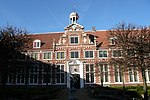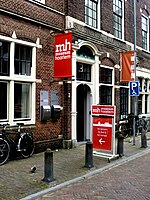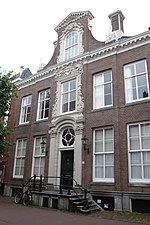Hofje van Willem Heythuijsen
1650 establishments in the Dutch RepublicHofjesRijksmonuments in Haarlem

The Hofje van Willem Heythuijsen is a hofje in Haarlem, Netherlands. It was founded in 1650 by the testament of Willem van Heythuysen (sometimes spelled Heijthuijsen) on the site of his summer residence outside the city walls of Haarlem on land that was considered Heemstede property until it was annexed in 1927. It is one of the few hofjes of Haarlem to be built outside the city walls. It has a 'T' shape and has a small open courtyard and a garden still intact.
Excerpt from the Wikipedia article Hofje van Willem Heythuijsen (License: CC BY-SA 3.0, Authors, Images).Hofje van Willem Heythuijsen
Kleine Houtweg, Haarlem
Geographical coordinates (GPS) Address Nearby Places Show on map
Geographical coordinates (GPS)
| Latitude | Longitude |
|---|---|
| N 52.369722222222 ° | E 4.6325 ° |
Address
Kleine Houtweg 139B
2012 CG Haarlem (Haarlem)
North Holland, Netherlands
Open on Google Maps











